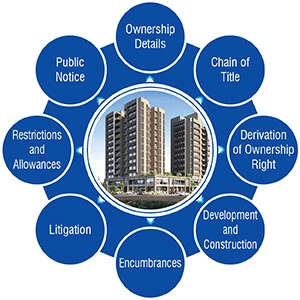10 Powerful eCommerce Data Collection Strategies & Examples
Real estate data aggregators often struggle to process data at the scale, pace, and quality required today by industry stakeholders. Thus, automation has become crucial to speed up core data aggregation tasks and standard process outputs.
An increasingly consumer-driven real estate industry has raised the heat on property data aggregators. There can be no compromise on delivering comprehensive and accurate data at scale. Further, real estate data aggregation today has moved on to encompass data ready for actionable and advanced analytics.
Fragmented adoption of data automation and the inefficiencies of manual data processing pose major hurdles to supplying quality data in the bulk needed. From insurance to investment, everyone in the real estate industry suffers due to dirty data that persists due to lack of data automation.
While automation of data aggregation can well enable data providers to meet industry demands, many are still stuck with legacy systems. The reasons are many. They range from lack of infrastructure, reluctance to change, unwillingness to make extra investments, uncertainties about the boons of data automation, etc.
But without automation, raising the quality of data collected, or tackling the flow of big data for analytics, is impossible to achieve. So, to keep pace with the demands of industry, there are 5 tasks that real estate data aggregators should automate without delay.

Online real estate data extraction and collection comprise multiple aspects, and data collection is difficult to tackle without automation. There’s no limit to the number of sources from which real estate information can flow in. Besides multiple listing sites, online real estate platforms, government departments and USPS websites, there’s a plethora of sources.
And for non-traditional analytic needs, realtors now ask for data collection from social media, business directories, weather offices, environment bodies, and everywhere possible. Even the footfall at neighborhood coffee shops can help assess the worth of a property.
Most of this data is not in an easily interpretable form. Not just the source type, but the unstructured nature of the data complicates its collection for aggregation.
Even after acquiring data, the task of standardizing multiple formats remains. Manually handling source type identification, unstructured data extraction and data standardization is prone to errors, time-consuming and proves costly.
28,000 plus customer records were captured from multiple property documents across six different states/counties. It helped the Real estate data research & information service provider from new England identify and prepare mailing lists of potential customers to target marketing campaigns. Automated bots/spiders not only fast tracked the data collection and entry process; but efficiently managed fluctuating and huge volumes of records.

Overall, 30% of data decays every year, making it impossible for real estate firms to run on generic data. That’s why real estate organizations prefer using data from aggregators who have significantly invested in data validation solutions.
Imagine how difficult it would be for sellers, buyers and agents when a buyer discovers errors or inaccuracies during verification of title and legal checks.
The aim of real estate data verification and validation is to thoroughly inspect property, seller, financing, and other information. It helps in compliance obligations, mitigates financial uncertainties and enhances customer experience. Considering the high volumes, myriad data sources and diverse formats;real estate data aggregators are now adopting automation wherever possible.
Validation and verification of 650K+ records every month empowered a leading US-based real estate portal to cater to customer needs of accurate property information. Automated property data validation and verification process helped the portal to offer granular-level intelligence to their clients which improved the CX and conversions significantly.
Automate to process real estate data at scale, pace, and quality.

Real estate data differs from data from other industries, because it’s in continuous flux. While property features remain constant, property value changes depending on multiple development aspects. Properties change hands from one owner to another, and so owner data, too, keeps changing.
Enriching real estate data is thus an essential task for real estate data aggregators. This requires identifying authentic data sources and conducting stepwise data pre-processing activities. All such refinement and quality enhancement steps need to be executed before the actual data enrichment process. These include data matching, purging and appending of missing details.
Even if aggregators take up all these tasks manually, enriching several thousand records against stringent daily turnarounds is never feasible. This brings data enrichment, too, within the purview of automation.

Manual data cleansing processes collapse in the face of massive data volumes and constantly increasing cleansing requirements. Property data cleansing requires correcting lexical errors, treating missing values, correcting domain formats, addressing irregularities and contradictory values. Manual cleansing often results in duplicate records and further requirement for de-duplication.
From a property database management perspective, cleansing processes also account for data validation and identification of erroneous or illegal entries.
It is equally important for real estate database providers to manage integrity constraints and ensure that dependencies on data attributes are not violated. These requirements prove too taxing for aggregators who try to flush out redundant, obsolete, and trivial (ROT) data from repositories by hand. Thus, automation of real estate data cleansing becomes essential.

Real estate document processing has two stages. The first comprises interpreting technical terms on title and sale deeds, illegible handwritten texts on mortgage documents, examining forms, invoices, etc. The next is accurately transferring this extracted content into databases.
Characterized by legal jargon, real estate document processing requires property data aggregators to be extra cautious at each step. But when they rely solely on manual document processing, the framework cannot handle the pressure of high volumes. Here’s a case that illustrates the issue and gives you some practical idea.
A real estate listing site from the USA had been using its traditional SOPs of manually processing documents for extracting relevant data. However, it failed to realize when its volume crossed the limits that couldn’t be addressed using manual methods. Ultimately, they turned to using custom-built automated solutions of a real estate data management service provider to streamline coordination between document processing and real estate data entry.
Automation helps real estate data aggregators to improve operational efficiencies, enhance revenues and also develop long-term confidence in the property data.
Automating core data aggregation tasks is the solution to streamlining the entire real estate data management ecosystem. And, understanding how to automate is necessary to implement the solution. Here are a few useful ways by which real estate data aggregators automate their core tasks.
Each process has rules, so whether it’s extracting data from online sources, cleansing records or enriching databases with additional details, nothing happens without rules. Leveraging business rules and scripts helps define a standard logic that works perfectly in any situation within the associated context.
While programming business rules, you have to ensure that all events are covered. Data management events assist you in developing macros, codes and a procedural logic to automate any particular task.
And don’t forget, programmable business rules are never static and should be updated as and when the processes update.
Custom bots and crawlers should be regularly used across the real estate data aggregation process. Bots have been transforming the mechanisms to collect, authenticate, standardize and enrich property data. So, they exercise a powerful influence across end-to-end property data aggregation pipelines.
As virtual assistants, bots collect data from website visitors by posing as a series of contextual questions. Bots are trained to alter the patterns of questions according to customer response. The responses yield data which is vital to real estate industry stakeholders.
As against this, crawlers operate differently. They treat all real estate websites as their data sources and gain access using visitor cookies. So, if you aim to gather pricing indices for property across a region, you will deploy a crawler that identifies relevant websites and fetches the data.
A major part of automated multi-channel data collection and enrichment is thus executed by crawlers. Simultaneously interacting with multiple sources, crawlers simplify validation. Moreover, crawlers work continually to discover new sources and enrich the database with new records.
Real estate data aggregation problems escalate when faced with non-traditional data. It warrants application of AI. AI and ML can transform and manage virtually every single data task. Today, analytical models account for a staggering 80% of trading in real estate.
Obtaining key elements for property databases such as surrounding conditions, landmarks, locality status etc. are non-traditional data collection challenges. Addressing these is beyond the scope of normal programming. Artificial intelligence uses cluster analysis and computer vision to group properties, build price databases, validate property attributes, etc.
Automated valuation models are another contribution of deep learning – DL. It helps in obtaining perfect market values of properties. These models don’t just predict accurate property pricing, but also enrich time critical mortgage databases. A classic example of an AI-backed process is an Autoregressive Integrated Moving Average — ARIMA based Time series model. It is rigorously used to collect price-sensitive data and forecast values for short-term pricing.
Natural Language Processing – NLP uses the text responses of the audience to provide information on the best properties. The keywords are detected to enable search engines to provide relevant listings. NLP is also used for validating metadata using minute features like no. of rooms, room dimensions, surface area, kitchen and lawn features, etc.
Real estate data aggregators across the globe are keen on optimizing database costs, boost ROI, and enhance their reputations. But with data management requirements constantly assuming new forms, automating processes becomes indispensable for handling these regular shifts.
Manual methods and approaches are wasteful, and error-prone, and lack the scalability needed to meet the needs of modern data analytics in real estate. For years, real estate industry was operating on educated guesses, speculations and gut feel. Apprehension to automation stopped them from unlocking the potential of technology backed tools. All these were hurdles for aggregators to compete with confidence and survive concurrent market dynamics. With automation by their side, real estate data aggregators can enable portals and marketplaces to empower their customers with granular and accurate insights while searching, analyzing, and comparing properties.
What’s next? Message us a brief description of your project.
Our experts will review and get back to you within one business day with free consultation for successful implementation.
Disclaimer:
HitechDigital Solutions LLP and Hitech BPO will never ask for money or commission to offer jobs or projects. In the event you are contacted by any person with job offer in our companies, please reach out to us at info@hitechbpo.com
Leave a Reply